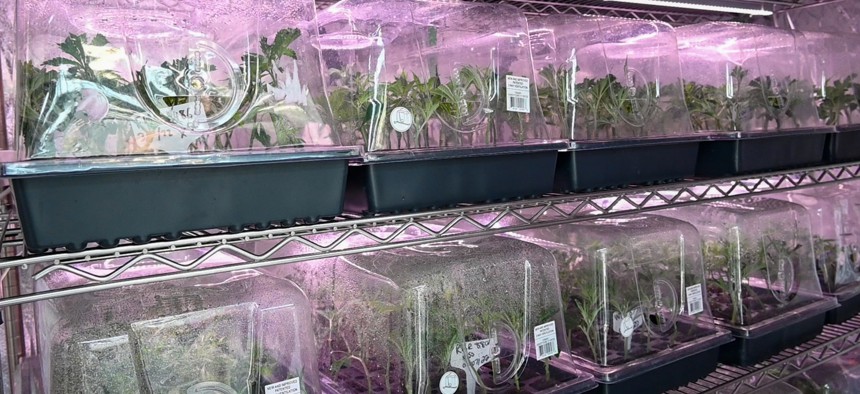New York’s cannabis industry has had a tumultuous rollout, leaving many farmers and dispensary license holders feeling the pain. But state and local governments have stepped up enforcement efforts and resolved several lawsuits as they plan to move forward. Now, looking ahead, state lawmakers are eyeing ways to ensure the industry's future is not only possible but sustainable.
State Sen. Michelle Hinchey and Assembly Member Patricia Fahy re-introduced legislation this year that would regulate the emissions of indoor cannabis farming operations.
“As we are kicking off a new industry that we know is energy-intensive, we should at the beginning help guide objectives, help guide regulations and help guide directives,” said Hinchey, “so that way when new businesses are coming into this new industry they’re doing it from the beginning in a way that is sustainable and works for the long term.”
The bill would require applicants for cannabis grower licenses to submit a “Cannabis Grower Efficiency Plan.” The plan would need to detail their expected uses of electricity, gas, water and waste management. The bill is on its way to the state Senate Energy and Telecommunications Committee.
The legislation would also specify water runoff limits, lighting energy limits and HVAC requirements.
Indoor cannabis farming dwarfs the emissions of other produce and has a noticeable impact on power grids.
Hinchey said that she hadn’t gotten any feedback positive or negative from the industry. “We haven’t heard anything on that,” she said. “I think the growers have a lot of other things on their plate if I’m being honest.”
The fight to eliminate the potency tax, levied against farmers based on the strength of the cannabis they grow, serves as an example.
Amy Hepworth, president and lead grower of Hepworth Farms, said that there wasn’t necessarily anything wrong with indoor growing, a byproduct of years of prohibition.
“People have fears. I mean, people invested billions and billions of dollars in growing indoors, it's a product of the system of when that plant was captured and taken away from the people,” said Hepworth. “They had to hide.”
“Indoor growing has its place because it’s a controlled environment,” Hepworth added.
Hepworth Farm grows its cannabis outside in the Hudson Valley. She did recognize however that the indoor growing style was energy-intensive. Noting that previous state-created guidelines have made life complicated for some in the industry, Hepworth said recreational cannabis needed regulation.
“I think we all play a part in, you know, energy conservation,” she said. “I see plenty of room for everywhere to grow.”


